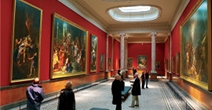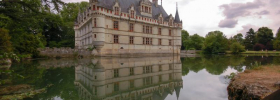 Home
Home- > Tours
- > Ile-de-France
- > Seine-et-Marne
- > Jouarre
- > Jouarre
Jouarre
| Topic | Sciences and discovery |
| Departure | JOUARRE (77) |
| Details | Jouarre is a french town , located in the department of Seine-et-Marne and the Île-de-France area. |
The Roman Tower
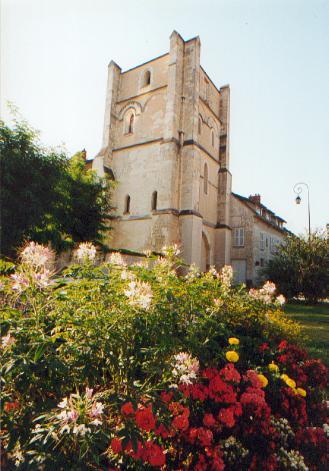
The Roman Tower of the abbey summarizes the history of Jouarre.
It has been marked by different periods. Built at the end of the 11st century or at the beginning of the 12th century, the Tower is built on Carolingian ruins.
It was the bell-tower of the abbatial church.
During the Hundred Years War, at the beginning of the 15th century, the Tower was partly destroyed in the fire lit by the English fighters.
Thereafter it was restored in the 16th century, by Madeleine d'Orléans, that gave its Gothic shapes.
Transformed in dwelling with a forge, at the Revolution the Tower was in a pityful state in the 19th century but had lost its arrow. To save it the floor was arrased, removing it from five meters height, that gave it a massive silhouette.
Despite of those damages the building continues to offer an interesting panorama. It was used as an observation spot for French artillery during the Battle of the Marne in September 1914.
Accommodation nearby
Brie Civilization Museum in Jouarre
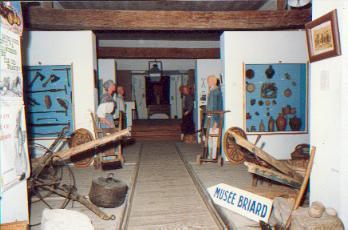
In 1961 the association "Friends of the Arts and Traditions of the Brie" decide to found in Jouarre a museum presenting the history of the handcrafts.
Above the mérovingian crypts in a former chapel of the 17th century, a collection of objects of the 17th, 18th, and 19th centuries summarized a large part of the traditions in our region.
The visitor can see the tools used for making the cheese of Brie, the blacksmith works, the mill or dedicated to the farming, a very beautiful even functional plow today.
Accommodation nearby
Saint-Pierre Saint-Paul Church
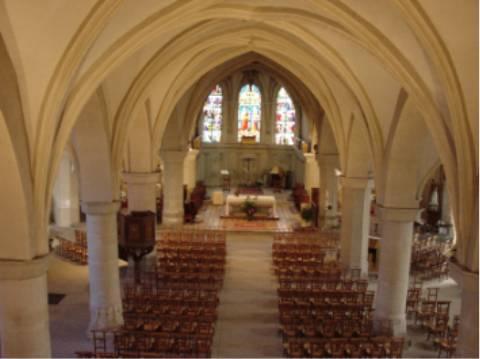
The former Saint-Paul church of Jouarre burnt during the Hundred Years War, it was necessary to rebuild it.
The yard started toward 1440, but was finished at the beginning of the 16th century. The general architecture of the building reveals a transition style, between Gothic and Renaissance.
So the arch of the nave remind Saint-Etienne des Monts in Paris.
The Saint-Pierre Saint-Paul church was restored in 1869, an opportunity to build turrets on the front.
The bell-tower, damaged in 1960, was rebuilt too. It has five bells: Jeanne, Anna, Albertine, Louise and a former bell from Sept-Sort, a village situated next to Jouarre.
The church shelters many pieces coming from the abbey. So the numerous shrines that you see in the choir were located in the abbatial church, they were only transferred here during the french Revolution.
In the North transept an engravement of the 16th century comes from the Tower of the abbey.
Accommodation nearby
The Farm-Manor of Nolongue

The building of the Farm-Manor in Nolongue dates from the first part of 14th century.
This farm was the only one in the region still intact after the Hundred Years War.
Originally, the farm was surrounded by moats and had a drawbridge.
Jehan de Brie a herder in 1357 wrote a book about his work "the Good Sheep's herder" so king Charles V asked him to become his private secretary.
Accommodation nearby
The Castle of Venteuil

The castle of Venteuil has been constructed toward 1760 according to the plans of architect Saget des Louvières.
Situated on a promontory dominating the Vallée de la Marne it was an observation spot for Napoléon in February 1814 at the end of the Bataille de Montmirail. But the Chateau de Venteuil is especially associated to the family de Jussieu.
In 1817 the famous botanist Antoine-Laurent de Jussieu bought the property in which he retired in 1830. His son Adrien-Henri Laurent succeeded to his father in his works. Valentine a grand chil of Antoine-Laurent, married the famous Hippolyte Fizeau, first scientist to measure the speed of light.
Accommodation nearby
Latest news on : Jouarre
Tourism near
 Visit the city of Jouarre
Visit the city of Jouarre - 1 Museum
Tours
 La Ferté-sous-Jouarre
La Ferté-sous-Jouarre
 Welcome to Coulommiers
Welcome to Coulommiers






















